Excerpts from Jim Conrad's
Naturalist Newsletter
from the June 12, 2016 Newsletter with notes from Hacienda Chichen Resort beside Chichén Itzá Ruins; limestone bedrock; elevation ~39m (~128ft), N20.676°, W88.569°; central Yucatán state, MÉXICO
HAREFOOT MUSHROOM INKY-CAPS APPEAR
Soil around the hut is thin to nonexistent, with white limestone bedrock emerging here and there. To make flowerbeds, I form circles using rocks or sections of cut tree trunks as frames, and inside the frames dump loose soil contributed by the local pocket gophers, or Tuzas, who throw up nice hills of it next to their entry holes. Into this dirt I mix lots of organic matter, mainly tree leaves and small, fallen woody twigs collected by the gardeners wanting to keep the Hacienda's lawns "neat." Therefore, I wasn't surprised when one morning in a new bed, among seedling cosmoses, overnight there had appeared clusters of hundreds of white, shaggy little items mostly less than half an inch tall (5mm). Below, you can see a typical cluster beneath a cosmos seedling
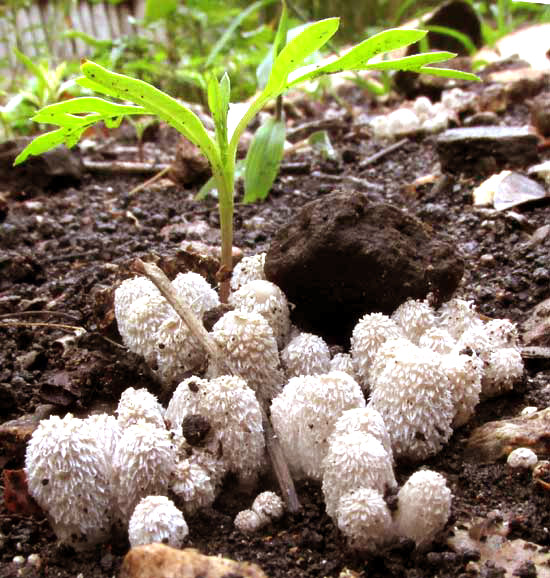
I wasn't surprised to see these because they were clearly young mushroom fruiting bodies. and we've seen this kind of mushroom many times in many places. They belong to a group of species known as inky caps. This specific kind of inky cap lives on decaying leaves, stems and such in soil, and I water the bed every day, keeping the soil moist, so this cosmos bed with all its mixed-in leaf litter just couldn't have been a better place for them.
Inky caps pop up overnight, form mushrooms by early morning, and melt back to an inky goo by nightfall. I was going to be in the hut all day, so I resolved to photograph the mushroom's entire growth and melting-back process.
By 9AM the cluster of immature fruiting bodies shown in the above photo had matured into a pretty gathering of delicately elegant mature mushrooms mostly about 2½ inches tall (6cm), as shown below:
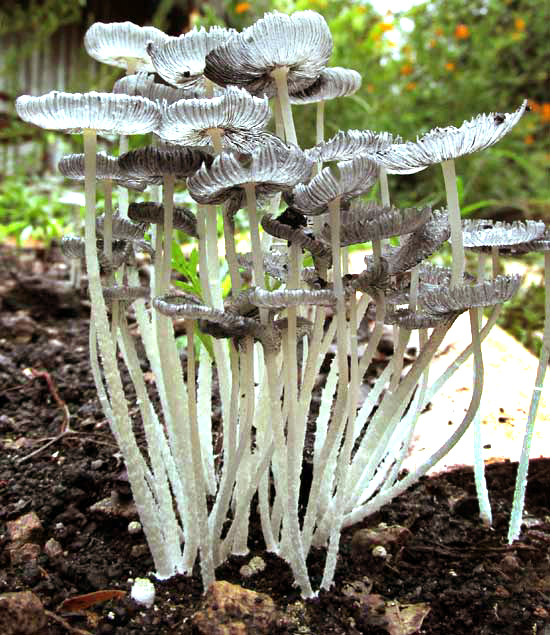
Below, a view from below a mushroom cap shows the gills fringed with black spores:
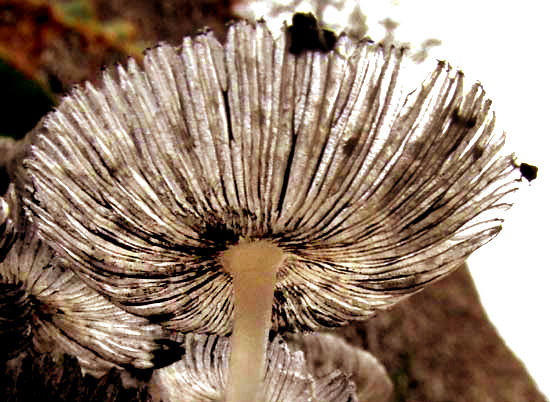
In that picture you can see that in some places the gills already appear to be starting to melt, turning into spore-rich " ink." A view of the top of a mushroom's cap is shown below:
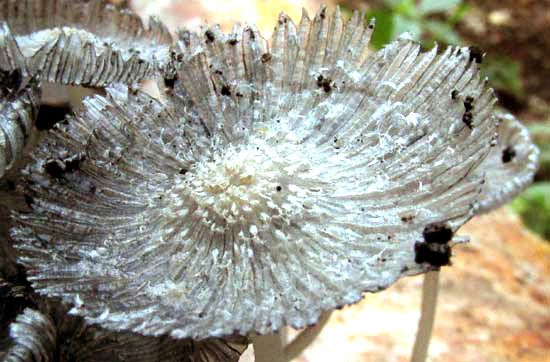
An important field mark to note in that picture is that the entire cap is covered with silvery hairs. That helps us pin down the species. In the above photo's lower, right corner, note the stem atop which the cap already has melted away, leaving just a gob of black, sticky stuff. By 11AM, already all our inky caps had passed their peak and were fading fast, as seen below:
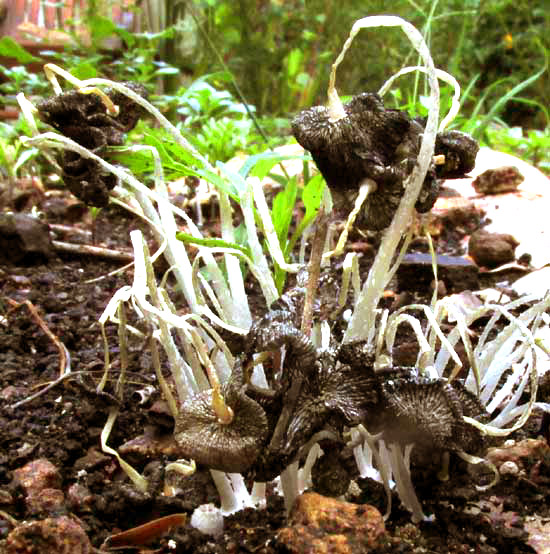
By 2PM mostly just their wilted stems were left, the caps now hardly distinguishable from the dark soil, shown below:
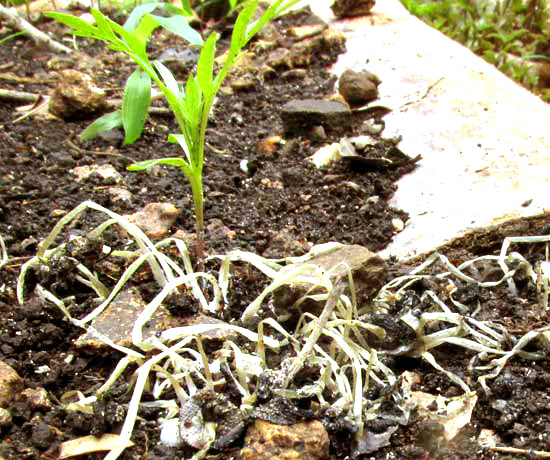
When at 4PM I passed on my way to give the 4 o'clock walk in the garden, it was hard to find any trace of the mushrooms.
I'm calling this COPRINOPSIS LAGOPUS, or at least a member of the Coprinopsis lagopus complex. Because the young fruiting bodies vaguely resemble the fuzzy paw of a white rabbit, sometimes the species is called Harefoot Mushroom. The species is common throughout much of the planet, wherever woody debris is decomposing. Often it's seen in urban settings on wood chips, yard litter and such.
But, there are many similar, tiny inky cap species. Some live on different organic matter -- dung, straw, sand, heaps of grass, etc. -- but some also arise from organic woody debris, and those can be told from Coprinopsis lagopus only through the microscope. One common and widespread lookalike occurring in similar habitats differs in its smaller, less elliptical (American football-shaped) spores.
Therefore, the name Coprinopsis lagopus is just a good guess, since it seems to be the most commonly encountered species, plus mushrooms like ours have been called Coprinopsis lagopus for a long time, so any expert looking for information on members of the complex in our part of the world will know to search on that name.
The job of Coprinopsis lagopus in Nature is to break down woody tissue, making its nutrients more available to other organisms. The broken-down cellulose becomes organic matter in the soil, which helps the soil hold both water and nutrients better. Coprinopsis lagopus is a worthy and welcome citizen of my flowerbed ecosystem.
By the way, the inky caps' process of dissolving into a black ink is called "deiquescence."